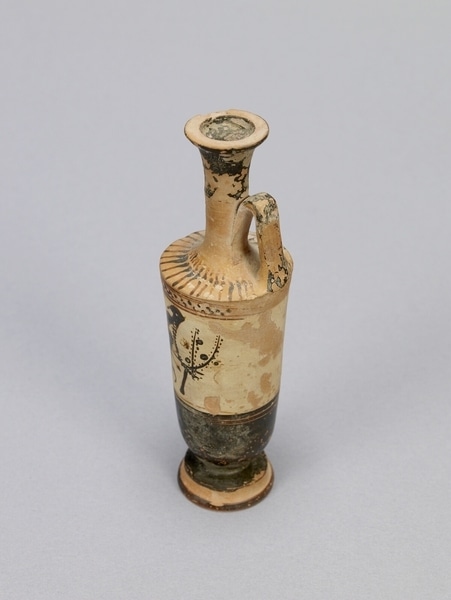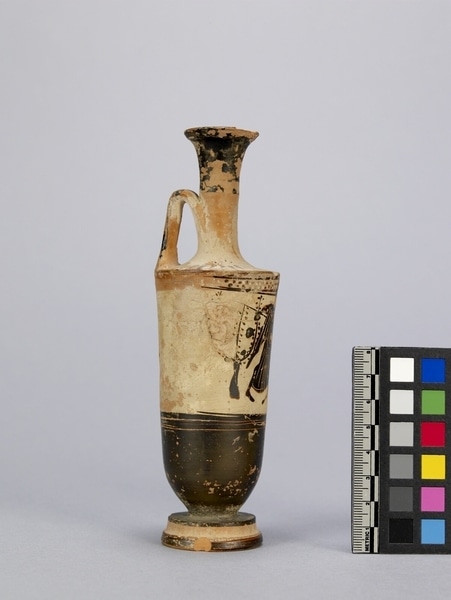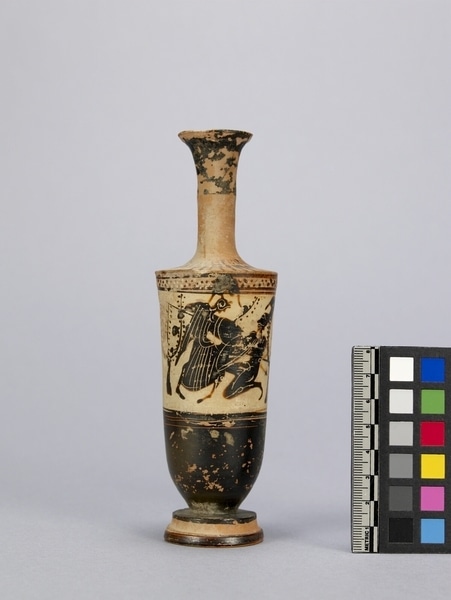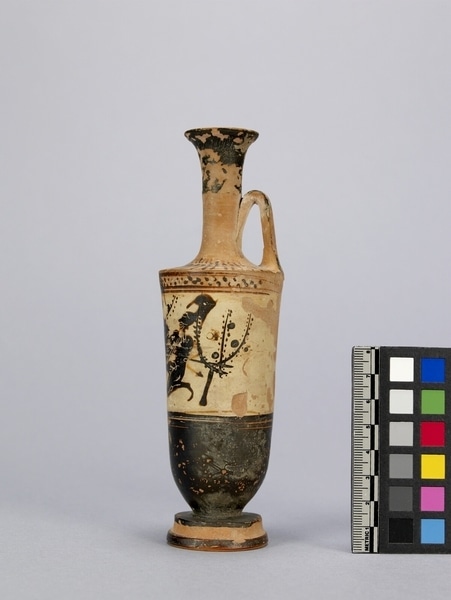Jug Item Number: Ce233 from the MOA: University of British Columbia




Description
Chimney-type lekythos. Jug has a tall cylindrical body, widening slightly at the top with a long thin neck flaring at the end, and a narrow foot and disc-like base in two degrees. Strap handle rises vertically from shoulder half way up neck then curves back and attaches to neck. Clay colour is red with added decoration in white and black. Interior of neck in black leaving rim reserved, exterior of neck black only down to where handle attached. Outer surface of handle in black. Shoulder decorated with radiating tongues. Frieze band on upper body given a white background and upper border consisting of a double band of offset dots between two lines. Figures on body depict combat between a female and male with fruit laden trees in background. Figures are in black against a white background. Female figure shown advancing from left to right, dressed in a long draped garment and attic helmet with a tall crest support. The crest of the helmet extends beyond the figured frieze into the dot frieze. The male is naked except for a Corinthian helmet with crest holder which he wears pulled back on his head; he is armed with a long spear and shield.
History Of Use
Lekythoi were primarily used to hold perfumed oils and as such were a common household item and also used as funeral goods. White ground lekythoi after the early period were used almost exclusively as grave goods.
Cultural Context
utilitarian; funerary
Iconographic Meaning
Female figure most likely Athena fighting a giant, Enceladus, but she is not depicted wearing the aegis, therefore the scene could also represent a battle between a Greek and an Amazon. Either scene was a common lekythoi decoration.
Narrative
This collection was said to have been acquired by James George during his service in Greece (Athens) from 1945-48.
Item History
- Made in Athens, Greece between 471 BCE and 451 BCE
- Owned by James George before November 28, 1985
- Received from James George (Donor) on November 28, 1985
What
Who
- Culture
- Greek
- Previous Owner
- James George
- Received from
- James George (Donor)
Where
- Holding Institution
- MOA: University of British Columbia
- Made in
- Athens, Greece
When
- Creation Date
- between 471 BCE and 451 BCE
- Ownership Date
- before November 28, 1985
- Acquisition Date
- on November 28, 1985
Other
- Item Classes
- ceramics
- Condition
- good
- Current Location
- Case 96
- Accession Number
- 1066/0013